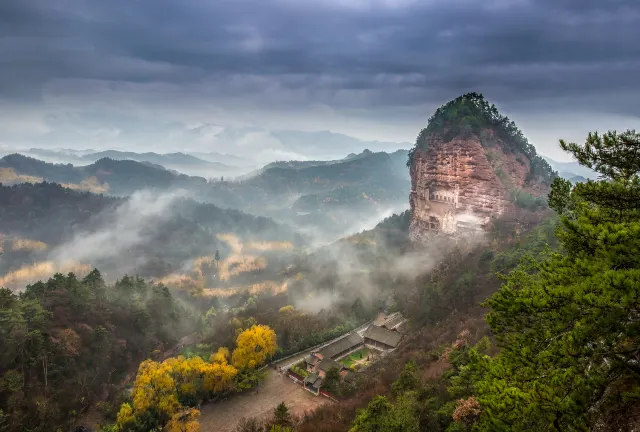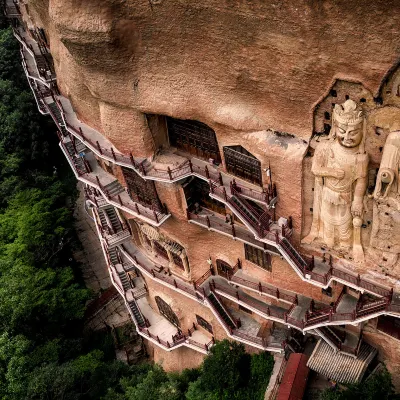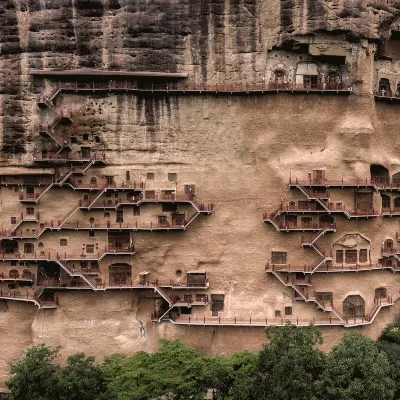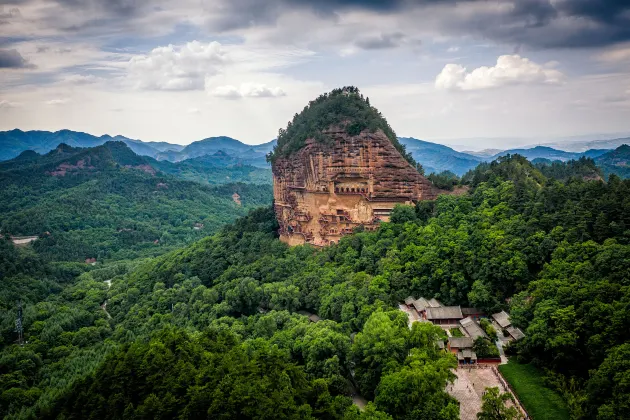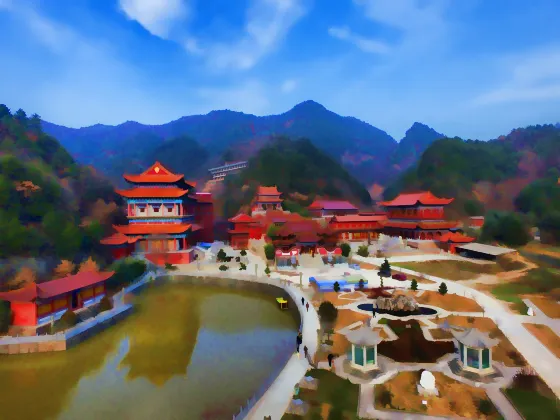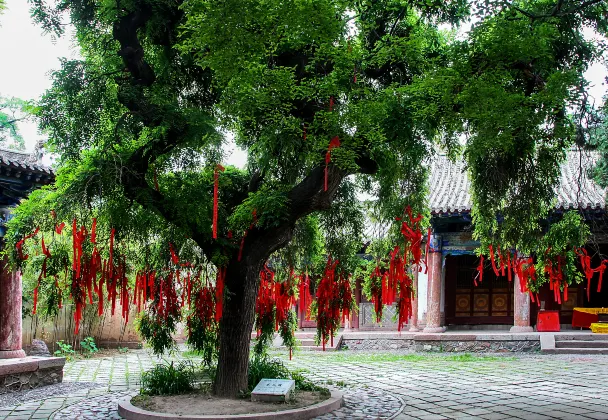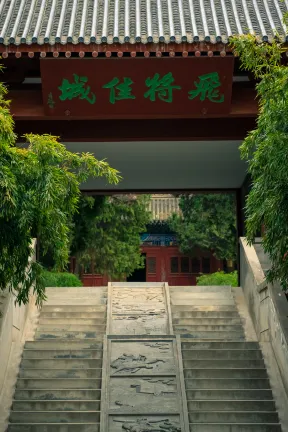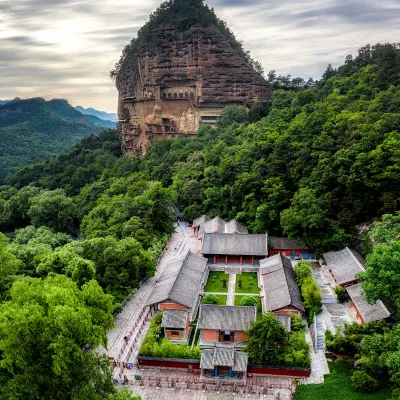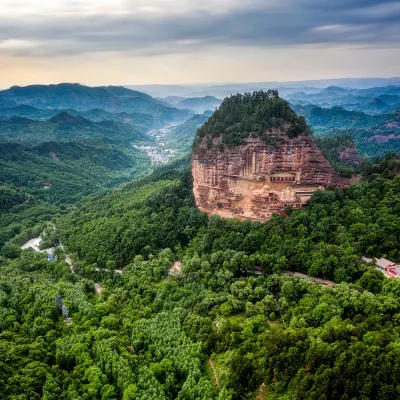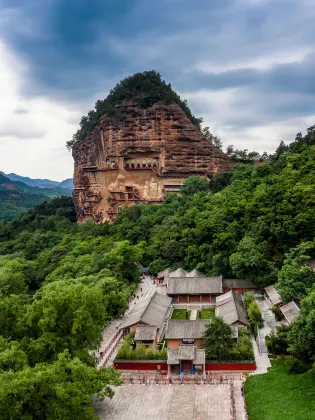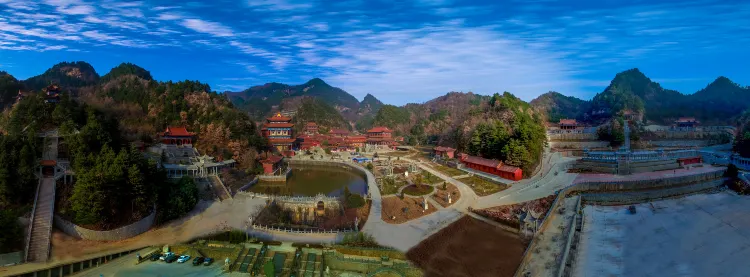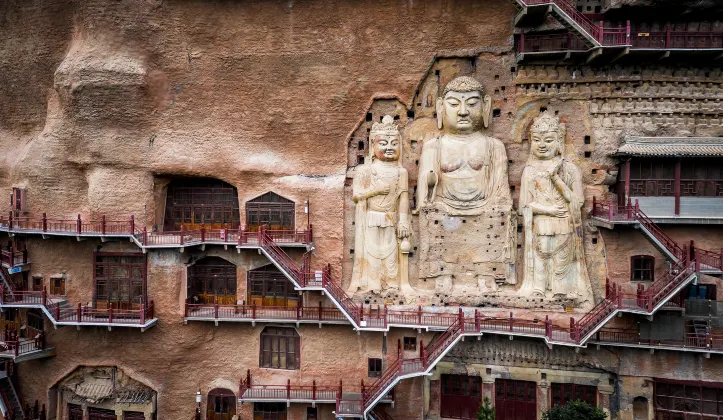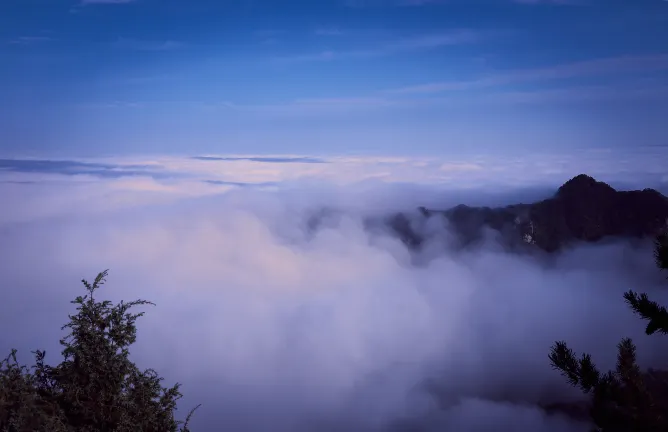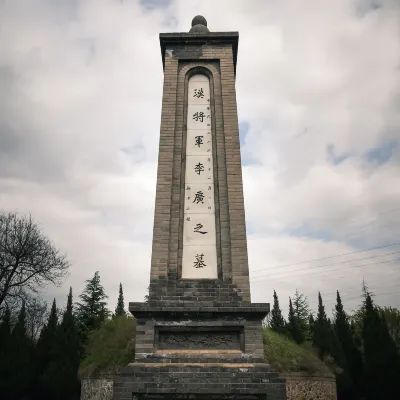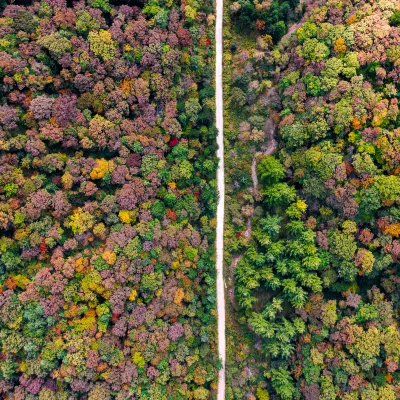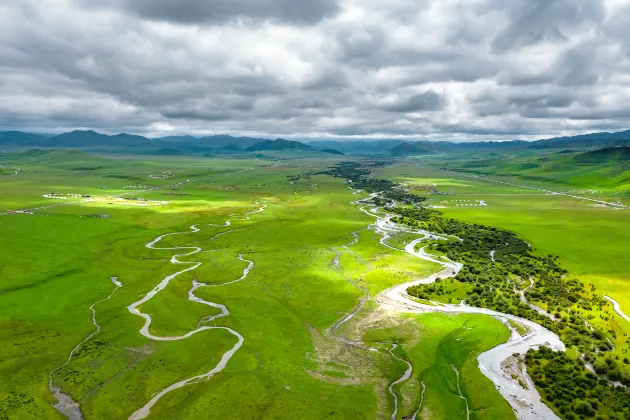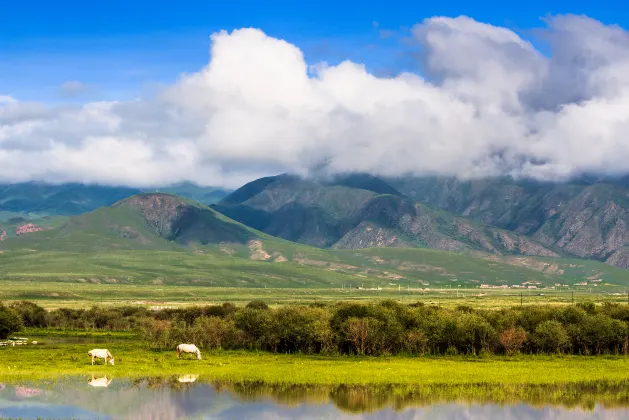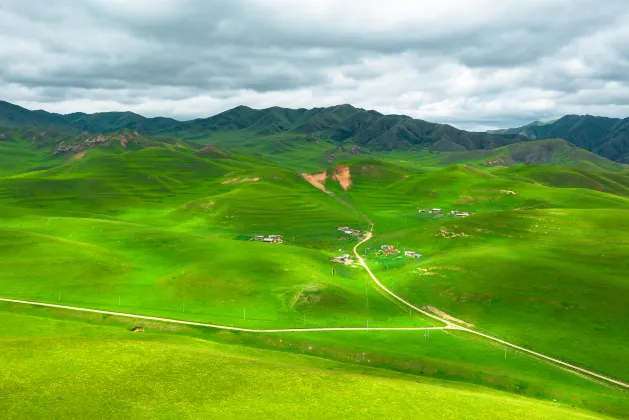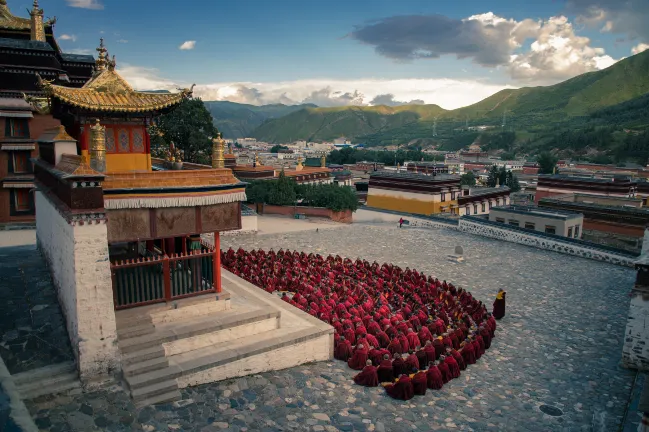
Find Your Tianshui Hotels
Enter your travel dates to check the latest prices and availability
Swipe up to view more
Filter by:
Hotel star rating
Popular Filters(full score 5)
Amazing 4.5+Great 4.0+Good 3.5+Pleasant 3.0+We found 100 hotels for you in Tianshui
Choose your travel dates to see the latest prices.



Hotel near Tianshui Railway Station,Tianshui 26.6% of visitors choose this area
The Tianshui Hongda Hotel is an ideal spot for travelers wanting to discover the city. Visitors to Tianshui will find that the Tianshui Hongda Hotel is a fantastic accommodation choice. The hotel is only 3km from Tianshui Railway Station and 4km from Tianshui Maijishan Airport, giving guests a number of convenient transportation options. There's plenty to do nearby, with Green Bull Garden, Tianshui Dragon Garden and Shenjin Temple all within a short distance. This hotel makes a great place to kick back and relax after a long day of sightseeing. Guests of this Tianshui hotel can make use of the parking facilities. Our guests rate this hotel as one of the best hotels for cleanliness. This hotel is particularly popular with those traveling on business.
GGuest User 2020.10.05
The other facilities in the room are ok, but the bathroom is really speechless, and the design is really amazing. The toilet and shower are inside the glass door, but the bathtub is outside. Please take a good taste. 1 After taking a shower, the toilet is full of water on the floor. , 2 Do I put the floor towel in the shower room or outside? Putting it inside is equivalent to soaking on the ground. When you put it outside, you must walk barefoot and carefully across a slippery floor and wall The last carefully slippery sign seems to laugh at you. 3 After I have soaked in the bathtub, if I want to take a shower, I have to come out and open the door and circle around before I can go to the shower. If I use the shower bar of the bathtub directly, the bathroom floor will be full of water. Is this design that embarrass you no matter how you use it?
The washbasin design is also from the same great designer. The washbasin is low and shallow, and the faucet stands proudly. This height difference is coupled with the fierce jet of the faucet without any foaming effect. It is proper. The hem of your clothes is splashed with water. May I ask if this is a faucet or a spray gun?
The hair dryer is also a must. I have never seen such a pocket hair dryer. It is similar to my daughter’s toy hair dryer. For women with long hair, let’s set aside half an hour more
Excellent
264 Reviews
4.5/5
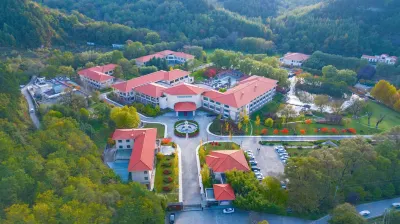
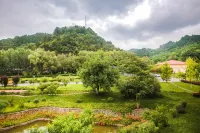

Hotel near Maiji Mountain Scenic Area,Tianshui 11.3% of visitors choose this area
The Hexieyuan Hotel (Hexieyuan Jiudian) boasts convenient access to the Mount Maiji (Mount Shan) scenic area and Tianshui railway station. Diners can enjoy both Chinese and Western cuisine at the on-site restaurants. Meeting rooms and a business center are provided for those traveling on business. For recreation, guests can go shopping at the on-site store, enjoy a drink at the bar, work out at the gym or play tennis.
亮亮箭 2021.07.19
The hotel facilities are average, but the hotel yard environment is very good! The yard environment is a landscape of its own. beautiful
Outstanding
43 Reviews
4.6/5
Price from
AU$84
per nignt
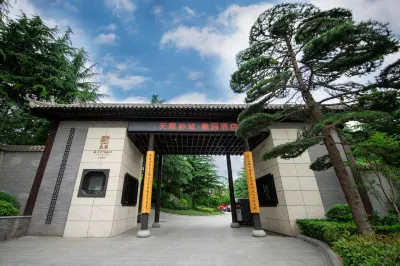


Hotel near Wanda Plaza(Qinzhou),Tianshui 1.6% of visitors choose this area
The TianXiFucheng Xiyuan Hotel provides a great place for travelers to relax after a busy day. Visitors to Tianshui will find that the TianXiFucheng Xiyuan Hotel is a fantastic accommodation choice. Boasting a convenient location, the hotel is just 10km from Nanhechuan Railway Station and 15km from Tianshui Maijishan Airport. With multiple attractions nearby including Nanguo Temple, Li Guang Tomb and Zhuge Military Base, guests will find plenty to keep themselves occupied. At the end of a busy day, travelers can unwind and relax in the hotel or go out and enjoy the city. This Tianshui hotel offers parking on site. If cleanliness is important to you, this hotel makes an excellent choice, as our guests consider this to be one of the cleanest hotels in the city.
GGuest User 2023.10.18
Not bad, it is very beautiful to see from the window, the whole is garden design
Outstanding
18 Reviews
4.8/5
Price from
AU$122
per nignt

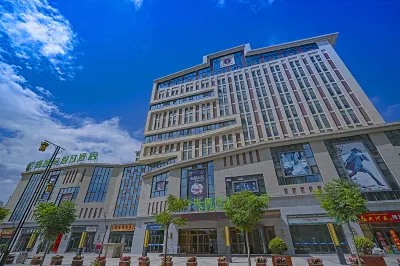


Hotel near Tianshui Railway Station,Tianshui 26.6% of visitors choose this area
The Hualong International Holiday Hotel provides a great place for travelers to relax after a busy day. Visitors to Tianshui will find that the Hualong International Holiday Hotel is a fantastic accommodation choice. Traveling to the hotel is easy with Tianshui Railway Station located approximately 4km away and Tianshui Maijishan Airport roughly 6km away. This hotel is located near many of Tianshui's attractions including Mapaoquan Water Park, Tianshui Dragon Garden and Cuihu Park. When guests have some time on their hands they can make use of the onsite facilities. This Tianshui hotel offers parking on site. This hotel is particularly popular with those traveling with families.
KKrista Hendrika 2021.07.21
Really nice hotel with very spacious rooms. Unfortunately our check in took a lot of time. The suite we booked was not available because of water problems. They offered us 2 separate rooms and we could even check them before we decided. But then there was a big time consuming administrative problem with the price difference. Not really convenient when you just want to go to your room with 3 children. But the rooms are very nice with comfortable beds
Excellent
196 Reviews
4.4/5
Price from
AU$58
per nignt



Hotel near Maiji District,Tianshui
The Tianshui Quxi Hotel provides a great place for travelers to relax after a busy day. Visitors to Tianshui will find that the Tianshui Quxi Hotel is a fantastic accommodation choice. Tianshui Railway Station is located approximately 45km away while Tianshui Maijishan Airport is 46km away. When guests have some time on their hands they can make use of the onsite facilities. This Tianshui hotel provides parking on site.
AAnonymous User 2022.09.18
This is a guest house in a forest farm, and it is impossible to clean every day. There is no place to eat, and the cockroaches can eat in their cafeteria. The food in the cafeteria is very general or not good, but the charge is charged according to the price of the outside restaurant. The surrounding environment is still good!
4 Reviews
3.8/5
Price from
AU$46
per nignt
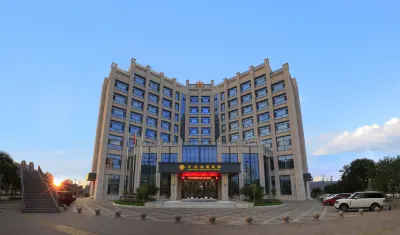


Hotel near Tianshui Railway Station,Tianshui 26.6% of visitors choose this area
The Tianshui Dizhi Hotel is an ideal spot for travelers wanting to discover the city. Visitors to Tianshui will find that the Tianshui Dizhi Hotel is a fantastic accommodation choice. With Tianshui Railway Station just 3km away and Tianshui Maijishan Airport only 3km away, transportation is very convenient. There is no shortage of things to see in the area, with the Mapaoquan Water Park, Shenjin Temple and Green Bull Garden all nearby. This hotel makes a great place to kick back and relax after a long day of sightseeing. This Tianshui hotel provides parking on site. Our guests consider this hotel to have excellent service. This hotel is a popular accommodation for guests traveling with families.
GGuest User 2021.08.19
Arrive at Tianshui Station at 6 o'clock in the morning. When we took a taxi, the waiter let us check in to the room early and gave us a breakfast as a gift. So heart-warming! Convenient transportation, starting fare from Tianshui Station. There is a direct bus directly opposite the Maijishan Hotel. There is direct drinking water in the room, which is good. Next time I visit Tianshui, I will choose again.
Outstanding
435 Reviews
4.6/5
Price from
AU$75
per nignt

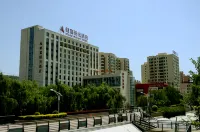
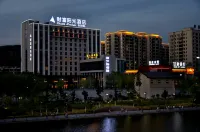
Hotel near Tianshui Railway Station,Tianshui 26.6% of visitors choose this area
The Fortune Sunshine Hotel is an ideal spot for travelers wanting to discover the city. Visitors to Tianshui will find that the Fortune Sunshine Hotel is a fantastic accommodation choice. The hotel is conveniently located just 1km from Tianshui Railway Station and 5km from Tianshui Maijishan Airport. With multiple attractions nearby including Tianshuishi Maijiqu Museum, Tianshui Dragon Garden and ShangBu Lu BuXingJie, guests will find plenty to keep themselves occupied. After a long day of sightseeing, guests can retire to the comfort of the hotel. This Tianshui hotel offers parking on site.
娜娜米达 2023.02.08
In addition to the old facilities, the hotel is very good, the location is also very good, the self-driving is very good, the parking lot is very good, not far from the pedestrian street,
65 Reviews
3.9/5
Price from
AU$51
per nignt



Hotel near Tianshui Railway Station,Tianshui 26.6% of visitors choose this area
The Atour Hotel (Tianshui South High-speed Railway Station Shengda Plaza) provides a great place for travelers to relax after a busy day. The Atour Hotel (Tianshui South High-speed Railway Station Shengda Plaza) offers a pleasant stay in Tianshui for those traveling for business or leisure. Traveling to the hotel is easy with Tianshui Railway Station located approximately 3km away and Tianshui Maijishan Airport roughly 4km away. With multiple attractions nearby including Cuihu Park, Shenjin Temple and Tianshui Dragon Garden, guests will find plenty to keep themselves occupied. At the end of a busy day, travelers can unwind and relax in the hotel or go out and enjoy the city. This Tianshui hotel offers parking on site. According to our guests, this hotel provides a very high level of service. For guests traveling on business, this hotel is consistently one of the most popular choices.
GGuest User 2024.02.23
The hotel is very clean as a whole, the service staff are very enthusiastic, tea is served when checking in, and the front desk upgraded the room when they saw that there were children with them. The location is excellent, the price-performance ratio is high, and there is free goodnight porridge in the evening, which is very considerate. The breakfast and freshly ground coffee are great. In short, the stay experience is very good!
Excellent
606 Reviews
4.5/5
Price from
AU$53
per nignt
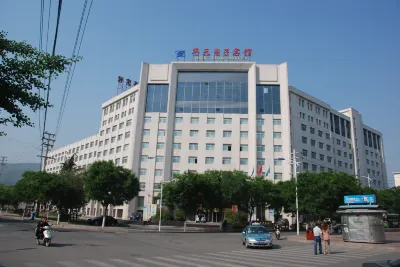


Hotel near Tianshui City Square,Tianshui 60.6% of visitors choose this area
The Huatian Hotel (Huatian Dianzi Binguan) is located within easy reach of the Tianshui Huatian Microelectronics Co. Ltd.Rooms in this Tianshui hotel are appointed with electric kettles and hair dryers.The on-site Chinese restaurant serves Huaiyang, Sichuan, Gansu and local foods.
GGuest User 2023.08.13
The room is generally clean, tidy, well equipped and brand new. The room is also super large and comfortable. Ctrip booked the hotel reasonably and satisfied. The customer service attitude is very good, including floor management and service staff are particularly hospitable, the problem solving speed is super fast, and the effect is added. I have the opportunity to come to the beautiful Tianshui in the later stage and continue to book this hotel. Like like like like like like like
Excellent
128 Reviews
4.5/5
Price from
AU$40
per nignt
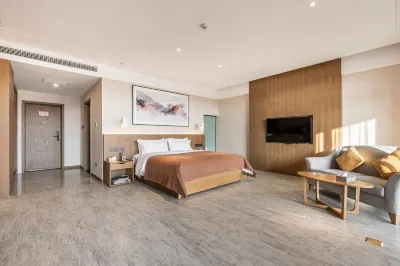

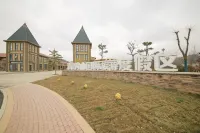
Hotel near Qinzhou District,Tianshui
The Tianshui Shiwaitaoyuan Hotel provides a great place for travelers to relax after a busy day. The Tianshui Shiwaitaoyuan Hotel offers a pleasant stay in Tianshui for those traveling for business or leisure. Nanhechuan Railway Station and Tianshui Maijishan Airport are located 40km and 47km away respectively. In their spare time, guests can explore the hotel's surroundings. This Tianshui hotel features parking on site. Our guests consider this hotel to have excellent service.
Outstanding
30 Reviews
4.6/5
Price from
AU$53
per nignt
Top hotel picks in Tianshui adored by our guests
Choose from these most booked hotels in the past month!
4.5/5
1004 ReviewsJinsha Hotel (Tianshui Railway Station Pedestrian Street)
Hotel near Tianshui Railway Station, Tianshui 26.6% of visitors choose this area
"Friendly front desk staff""Easy to get around"
Select dates to view prices4.6/5
357 ReviewsChaoman Hotel (Tianshui Railway Station Shangbu Road Pedestrian Street)
Hotel near Tianshui Railway Station, Tianshui 26.6% of visitors choose this area
"Classy environment""Easy to get around"
Select dates to view prices4.8/5
140 ReviewsMaiji Mountain Muzili Homestay
Hotel near Maiji Mountain Scenic Area, Tianshui 11.3% of visitors choose this area
"Offers pick-up/drop-offs""Great food"
Select dates to view prices4.9/5
328 ReviewsMaiji Mountain Grottoes Manor
Hotel near Maiji Mountain Scenic Area, Tianshui 11.3% of visitors choose this area
"Great service""Clean and tidy"
Select dates to view prices4.8/5
1535 ReviewsMercure Hotel Tianshui Wanda Plaza
Hotel near Wanda Plaza(Qinzhou), Tianshui 1.6% of visitors choose this area
"Friendly front desk staff""Classy environment"
Select dates to view prices4.7/5
403 ReviewsTianshui Kelly Rose Hotel
Hotel near Wanda Plaza(Qinzhou), Tianshui 1.6% of visitors choose this area
"Delicious breakfast""Classy environment"
Select dates to view prices4.3/5
195 ReviewsGangu Hotel
Hotel near Gangu
"Great stay!""Classy environment"
Select dates to view prices4.7/5
72 ReviewsMaijishan Grotto Xiaocai B&B
Hotel near Maiji Mountain Scenic Area, Tianshui 11.3% of visitors choose this area
"Great service""Great food"
Select dates to view prices4.8/5
1075 ReviewsMeihao Lizhi Hotel (Tianshui South Railway Station Shengda Square Branch)
Hotel near Tianshui Railway Station, Tianshui 26.6% of visitors choose this area
"Friendly front desk staff""Delicious breakfast"
Select dates to view prices4.5/5
667 ReviewsHoliday Inn Express Tianshui City Center
Hotel near Tianshui City Square, Tianshui 60.6% of visitors choose this area
"Delicious breakfast""Friendly front desk staff"
Select dates to view pricesWake up to a delicious breakfast in Tianshui
Start your day with a delightful breakfast experience at our select hotels in this vibrant city
Jia Fu Hotel
Hotel near Tianshui City Square, Tianshui 60.6% of visitors choose this area
The Jia Fu Hotel provides a great place for travelers to relax after a busy day. The Jia Fu Hotel offers a pleasant stay in Tianshui for those traveling for business or leisure. With Nanhechuan Railway Station just 12km away and Tianshui Maijishan Airport only 17km away, transportation is very convenient. The nearby area boasts an abundance of attractions including TianShuiShi QinZhouQu WenHuaGuan ZhanLanGuan, China-Japan Friendship Cherry Garden and ShanSheng HuiGuan. When guests have some time on their hands they can make use of the onsite facilities. This Tianshui hotel provides parking on site. Our guests consider this hotel to have excellent service. For guests traveling with families, this hotel is consistently one of the most popular choices.
4.5/5
Excellent499 ReviewsPrice per night from: AUD 81
Public Air Travel Maijishan Pearl Hotel
Hotel near Maiji District, Tianshui
如果不是為城內辦事,可選擇。酒店很好,位置、停車、環境、房間軟硬件等,均可推薦。非熱門季節,以為早餐人少、酒店會比較應付事,沒有想到準備的很周到細緻!前台各位人員均表現的比較有素質。正趕上第二天一早下雪,白茫茫一片,真好看,更美的是酒店的員工,看着裝應該是來自各個部門,一起掃雪!真的是難得!
4.5/5
Excellent306 ReviewsPrice per night from: AUD 69
Dadiwan Impression Hotel
Hotel near Qin'an
The Dadiwan Impression Hotel provides a great place for travelers to relax after a busy day. The Dadiwan Impression Hotel offers a pleasant stay in Qin'an for those traveling for business or leisure. Boasting a convenient location, the hotel is just 800m from Qinan Railway Station and 55km from Tianshui Maijishan Airport. This hotel is located near many of Qin'an's attractions including Xingguo Temple, Qin'an Theater and Qin'an Museum. In their spare time, guests can explore the hotel's surroundings. Guests of this Qin'an hotel can make use of the parking facilities. This hotel is the usual choice for a large number of business travelers.
4.3/5
Excellent202 ReviewsPrice per night from: AUD 66
Silk Road Guanshan International Hotel
Hotel near Zhangjiachuan
The room was very clean, the front desk service was very warm, the breakfast was good, and I felt that it was the most upscale hotel in Zhangjiachuan. Next time I come to Zhangchuan, I will stay at the Silk Road Guanshan International Hotel.
4.4/5
Excellent51 ReviewsPrice per night from: AUD 46
Crystal Garden Hotel (Tianshui Ancient City Fuxi Temple)
Hotel near Tianshui City Square, Tianshui 60.6% of visitors choose this area
The Crystal Garden Hotel (Tianshui Ancient City Fuxi Temple) was recently renovated in 2021, making it a fantastic choice for those staying in Tianshui. Traveling to the hotel is easy with Nanhechuan Railway Station located approximately 10km away and Tianshui Maijishan Airport roughly 17km away. Guests will find Nanzhaizi, Yuquan Temple and FuXiCheng (ShuangQiao Lu) just a short distance from the hotel. After a long day of sightseeing, guests can retire to the comfort of the hotel. Our guests consider this hotel to have excellent service. This hotel is the usual choice for a large number of business travelers.
4.6/5
Outstanding1395 ReviewsPrice per night from: AUD 53
Jinlong Hotel
Hotel near Tianshui City Square, Tianshui 60.6% of visitors choose this area
The Jinlong Hotel provides a great place for travelers to relax after a busy day. Visitors to Tianshui will find that the Jinlong Hotel is a fantastic accommodation choice. With Nanhechuan Railway Station just 9km away and Tianshui Maijishan Airport only 15km away, transportation is very convenient. Guests will find Children's Paradise, Tianshui Museum and Wuhou Shrine just a short distance from the hotel. After a long day of sightseeing, guests can retire to the comfort of the hotel. According to our guests, this hotel provides a very high level of service.
4.7/5
Outstanding65 ReviewsPrice per night from: AUD 50
Qin Rong Hotel
Hotel near Qin'an
The Qin Rong Hotel is an ideal spot for travelers wanting to discover the city. Visitors to Qin'an will find that the Qin Rong Hotel is a fantastic accommodation choice. With Qinan Railway Station just 4km away and Tianshui Maijishan Airport only 55km away, transportation is very convenient. There's plenty to do nearby, with Anjiayuanzi Leisure Square, Qin'an Museum and Taishanmiao all within a short distance. In their spare time, guests can explore the hotel's surroundings. This Qin'an hotel features parking on site.
3.0/5
65 ReviewsPrice per night from: AUD 29
Hexieyuan Hotel
Hotel near Maiji Mountain Scenic Area, Tianshui 11.3% of visitors choose this area
The Hexieyuan Hotel (Hexieyuan Jiudian) boasts convenient access to the Mount Maiji (Mount Shan) scenic area and Tianshui railway station. Diners can enjoy both Chinese and Western cuisine at the on-site restaurants. Meeting rooms and a business center are provided for those traveling on business. For recreation, guests can go shopping at the on-site store, enjoy a drink at the bar, work out at the gym or play tennis.
4.6/5
Outstanding43 ReviewsPrice per night from: AUD 84
Tianshui Dizhi Hotel
Hotel near Tianshui Railway Station, Tianshui 26.6% of visitors choose this area
The Tianshui Dizhi Hotel is an ideal spot for travelers wanting to discover the city. Visitors to Tianshui will find that the Tianshui Dizhi Hotel is a fantastic accommodation choice. With Tianshui Railway Station just 3km away and Tianshui Maijishan Airport only 3km away, transportation is very convenient. There is no shortage of things to see in the area, with the Mapaoquan Water Park, Shenjin Temple and Green Bull Garden all nearby. This hotel makes a great place to kick back and relax after a long day of sightseeing. This Tianshui hotel provides parking on site. Our guests consider this hotel to have excellent service. This hotel is a popular accommodation for guests traveling with families.
4.6/5
Outstanding435 ReviewsPrice per night from: AUD 75
Mercure Hotel Tianshui Wanda Plaza
Hotel near Wanda Plaza(Qinzhou), Tianshui 1.6% of visitors choose this area
Meiju Hotel is a mid to high-end hotel brand from France. Currently, it operates more than 1000 hotels in more than 60 countries around the world. It skillfully integrates French elegance into the senses, providing guests with a pure French experience and international standard of service, and providing rich membership courtesies for members of the China Hotel Club and Accor Delightful World.Tianshui Wanda Plaza Meiju Hotel is subordinate to the high-end brand hotel of Huazhu Hotel Group. The hotel is located in the core business circle of Wanda Plaza in Qinzhou District, Tianshui, with a superior geographical location. It is adjacent to Tianshui Wanda Plaza, with convenient transportation and complete living facilities around. The entrance and exit of the "Wulipu Station" on the 100 meter tram line 1 near the hotel can easily reach Maiji District, Jihe Landscape Park, and Tianshui Convention and Exhibition Center.The hotel has more than 120 intelligent rooms, with a variety of room types to choose from, and the French design fully demonstrates romance and elegance. The high-speed fiber optic WI-FI wireless network covers the entire area of the hotel, equipped with a wealth of Chinese and Western style cafeterias, as well as free facilities such as a 24-hour gym and self-service laundry room, to meet the various needs of business travelers. The hotel is equipped with a multi-functional conference room, high-end LED screen and audio system configuration, to meet the meeting needs of various business people.
4.8/5
Outstanding1535 ReviewsPrice per night from: AUD 77
Discover our handpicked four-star hotel collection in Tianshui
Whether you're traveling for business or leisure, these four-star hotels provide the perfect backdrop for your journey
4.7/5
Outstanding507 ReviewsPrice per night from: AUD 39
Emperor International Hotel
Hotel near Tianshui City Square, Tianshui 60.6% of visitors choose this area
The Emperor International Hotel (Gansu Huangcheng Guoji Fandian) is located in central Tianshui, just a 15-minute drive from both the railway station and airport. With easy access to local attractions including Yuquan Temple, Nanguo Temple and the Tianshui Chengji Museum, guests will find plenty to see and do.
The hotel provides ticket reservation, free Wi-Fi throughout the building and a free map of the area, ensuring a carefree stay.
A number of well decorated restaurants cater to diners, and Western as well as Chinese cuisines are served, while thirsty guests can head to the coffee shop or bar.
Those conducting business and hosting events can make use of the hotel's extensive convention facilities including a multi-media convention center, a function room and a commercial center.
Guests looking to pass the time can go to the fitness room or relax with a massage.
4.5/5
Excellent499 ReviewsPrice per night from: AUD 56
Silu Wanli Hotel
Hotel near Tianshui Railway Station, Tianshui 26.6% of visitors choose this area
The Silu Wanli Hotel provides a great place for travelers to relax after a busy day. Visitors to Tianshui will find that the Silu Wanli Hotel is a fantastic accommodation choice. The hotel is conveniently located just 2km from Tianshui Railway Station and 4km from Tianshui Maijishan Airport. Famous local attractions Cuihu Park, Green Bull Garden and ShangBu Lu BuXingJie, can all be reached with a short walk. In their spare time, guests can explore the hotel's surroundings. This Tianshui hotel provides parking on site. There's never a dull moment at this hotel, our guests indicate that the facilities are excellent. For guests traveling with families, this hotel is consistently one of the most popular choices.
4.5/5
Excellent484 ReviewsPrice per night from: AUD 59
Jin Cheng Hotel
Hotel near Gangu
Gangu Jincheng Hotel is located in Tianshui City, Gangu County, South Riverside Road, from the national 4A-class scenic area - Dapangshan Grottoes about a few minutes drive, convenient travel.The hotel is built by Gansu Takahashi Construction Group Co., Ltd., with warm and comfortable rooms, elegant dining environment, advanced and complete facilities and quality services to attract people from all walks of life, is engaged in business negotiations, tourism activities of the best choice
4.8/5
Outstanding213 ReviewsPrice per night from: AUD 36
Tianshui Maiji Mountain Hot Spring Tourism Hotel
Hotel near Maiji District, Tianshui
The Tianshui Maiji Mountain Hot Spring Tourism Hotel is an ideal spot for travelers wanting to discover the city. Visitors to Tianshui will find that the Tianshui Maiji Mountain Hot Spring Tourism Hotel is a fantastic accommodation choice. Tianshui Railway Station and Tianshui Maijishan Airport are located 25km and 26km away respectively. Seeing the sights from this hotel is easy with Tianshui's attractions including Hot Spring Bath House and Jieziguzhen Sightseeing Platform close by. After a long day of sightseeing, guests can retire to the comfort of the hotel. This Tianshui hotel provides parking on site. Guests tell us the location of this hotel is fantastic. This hotel is particularly popular with those traveling with families.
4.5/5
Excellent535 ReviewsPrice per night from: AUD 67
Binhe Hotel
Hotel near Tianshui Railway Station, Tianshui 26.6% of visitors choose this area
The 滨河大酒店(天水站店) is an ideal spot for travelers wanting to discover the city. The 滨河大酒店(天水站店) offers a pleasant stay in Tianshui for those traveling for business or leisure. The hotel is conveniently located just 1km from Tianshui Railway Station and 4km from Tianshui Maijishan Airport. Seeing Tianshui's sights from this hotel is easy with TianShui WenHua LvYou ShangYeJie, Chengming Taiqiu Yundong Club (maijifenbu) and Green Bull Garden all close by. After a long day of sightseeing, guests can retire to the comfort of the hotel. This Tianshui hotel provides parking on site. According to our guests, this hotel provides a very high level of service. For guests traveling with groups of friends, this hotel is consistently one of the most popular choices.
4.6/5
Outstanding841 ReviewsPrice per night from: AUD 48
Baiyu Eiffel Hotel (Tianshui City Government Central Plaza)
Hotel near Tianshui City Square, Tianshui 60.6% of visitors choose this area
4.7/5
Outstanding617 ReviewsPrice per night from: AUD 84
Wanda Hotel
Hotel near Tianshui Railway Station, Tianshui 26.6% of visitors choose this area
The Wanda Hotel provides a great place for travelers to relax after a busy day. Visitors to Tianshui will find that the Wanda Hotel is a fantastic accommodation choice. With Tianshui Railway Station just 2km away and Tianshui Maijishan Airport only 7km away, transportation is very convenient. The nearby area boasts an abundance of attractions including TianShui WenHua LvYou ShangYeJie, Tianshui Dragon Garden and Cuihu Park. After a long day of sightseeing, guests can retire to the comfort of the hotel. Guests of this Tianshui hotel can make use of the parking facilities. There's never a dull moment at this hotel, our guests indicate that the facilities are excellent. This hotel is particularly popular with those traveling with families.
4.4/5
Excellent289 ReviewsPrice per night from: AUD 56
Tianshui Hotel
Hotel near Wanda Plaza(Qinzhou), Tianshui 1.6% of visitors choose this area
The Tianshui Hotel (Tianshui Binguan) is in Tianshui city and convenient to a local scenic spot just off Tianshui road. Rooms are of the standard variety and come with IDD dialing, separate shower room and central A/C. On-site restaurants of this Tianshui hotel serve Chinese, Western and Muslim foods and can seat up to 900. The function hall and conference center holds up to 300. The business center is also provided. For relaxation, guests can go to the beauty salon, take a foot massage, or socialize in the bar.
4.3/5
Excellent122 ReviewsPrice per night from: AUD 48
Raspberry·Songhua Hotel (Tianshui Government Center Plaza)
Hotel near Tianshui City Square, Tianshui 60.6% of visitors choose this area
4.7/5
Outstanding467 ReviewsPrice per night from: AUD 66
Hotels near must-see attractions in Tianshui
Select from our curated hotels and enhance your visit with convenient access to nearby attractions
Trip Best Attractions

No.1
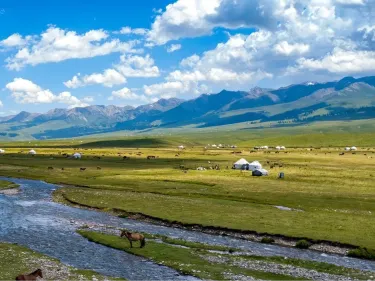
No.2

No.3

No.4

No.5
Hear opinions from your fellow travelers about Tianshui hotels
Explore honest ratings and valuable insights from real travelers to help you find the best stay
4.8/5
Outstanding
GGuest UserThe room is okay, but the towels and toiletries are not fully equipped, which is a fly in the oin**ent. The overall experience is not bad, I will give it 5 stars. It is worth mentioning that the food is delicious, and the boss sent us to the scenic spot for free
maijishanshikuwangjidayuan
Hotel near Maiji Mountain Scenic Area, Tianshui 11.3% of visitors choose this area
Price per night from: AUD 30
4.8/5
Outstanding
GGuest UserI loved this place. The family who runs it is extremely friendly and helpful. The room was clean and the location was great. They also cook very well. Great food. The guy gave us a ride to the cave and to the bus stop. Very nice of him. The only category not rated five stars is Amenities. There was not any soap, hand nor body. There were also no towels. This was the only negative. Overall, I'd highly recommend anyone to stay there. I cannot speak Chinese so they were pacient and communicated well when trying to communicate. Thanks again. :)
Homestays in the distance of Maiji Mountain
Hotel near Maiji Mountain Scenic Area, Tianshui 11.3% of visitors choose this area
Price per night from: AUD 29
4.8/5
Outstanding
DDaoxixiaotianjiaoMust praise! ! It was almost nine o'clock in the evening when we arrived, and the proprietress came to pick us up in person. The room was clean and tidy, and the proprietress was very kind! ! The cooked dishes are also very delicious, no less than the stir-fried restaurants on the road. The breakfast in the morning is also very rich, and the quantity is large and affordable. Passing by this store is a very good experience during our trip ୧꒰•̀ᴗ•́꒱୨Yes The opportunity will go again!
Facilities: Basic, sufficient wifi
Sanitation: very clean
Environment: Surrounded by green hills, fresh air
Service: very good! ! ! !
Maijishan Warm Farmhouse
Hotel near Maiji Mountain Scenic Area, Tianshui 11.3% of visitors choose this area
Price per night from: AUD 28
4.7/5
Outstanding
GGuest UserThe owner’s dishes are very delicious. The few dishes I ordered are not thunderous and very enthusiastic. I personally think the environment is very good near the Maiji Mountain Scenic Area.
Runxin Guesthouse
Hotel near Maiji Mountain Scenic Area, Tianshui 11.3% of visitors choose this area
Price per night from: AUD 37
4.6/5
Outstanding
GGuest UserStayed here for a few days, I feel pretty good, the room is also very good, the air is very fresh and there is no smell, the sheets are very clean, the whole is very simple and tidy, the environment is also very good, very close to the scenic spot, walking It’s here, while walking, looking at the different customs, I feel that people have been cured. And if you are tired in the scenic area, the boss can also pick up and drop off for free. The boss is a very nice young lady, the person is also very gentle, the service attitude is very good, buy water in the middle of the night to call her, very gentle and patient, can see that it is very sleepy, but there is no impatience, ate two meals, the craftsmanship is very good, It’s quite delicious to eat, a lot more smooth than eating outside, overall it’s very good, I wish the boss a prosperous business.
Maiji Mountain Qingliang Villa
Hotel near Maiji Mountain Scenic Area, Tianshui 11.3% of visitors choose this area
Price per night from: AUD 22
4.6/5
Outstanding
GGuest UserThe hotel is located in the Maiji Mountain Scenic Area, a ten-minute walk to the Maiji Mountain Grottoes. The environment is beautiful, the air is fresh, clean and tidy, there is free parking, the food is good, the owner is enthusiastic, and the shuttle is free. It is a good place to escape the heat.
Maijishan Shanli Homestay
Hotel near Maiji Mountain Scenic Area, Tianshui 11.3% of visitors choose this area
Price per night from: AUD 25
4.5/5
Excellent
AAnonymous UserRead lots of reviews about this hotel before booking it for a night. I'll still give it a 5-star review because it is so convenient for independent travellers like us. The railway station as well as the local public buses station/stops are just a few minutes walk away from the hotel. The rooms are clean and spacious, the bathroom shower has strong flow of water. It's near to the famous Malatang eateries, too, just less than 5 minutes walk away.
The rooms are not sound proof and we can hear the next door guests talking. Since it was already 12.30 midnight, we couldn't get to sleep due to the non-stop talking in the next room, we decided to seek help from the counter staff to give us a quiet room. She was so kind and moved us to another room on the same floor in the middle of the night. Kudos to this kind lady.
Jinsha Hotel (Tianshui Railway Station Pedestrian Street)
Hotel near Tianshui Railway Station, Tianshui 26.6% of visitors choose this area
Price per night from: AUD 39
4.3/5
Excellent
GGuest UserThe hotel is fully equipped, 24 hours hot water, the hotel is particularly clean, the sanitary environment is good, the service is very thoughtful, the boss and waiter are particularly enthusiastic, the room is soundproofed, the hotel is clean, warm, there is a feeling of home, the sheets are clean, and it is comfortable to sleep. Close to the city center, It is very convenient to eat and shop. The most important thing is that parking is very convenient. The parking lot is at the entrance of the hotel. This is the most satisfying stay. I will find his home when I stay in the hotel in the future and come back next time.
Tiantianyou Hotel (Tianshui green market store)
Hotel near Tianshui City Square, Tianshui 60.6% of visitors choose this area
Price per night from: AUD 43
3.0/5
LLiaoninghuashiClose to Maiji Mountain Scenic Area, it takes a few minutes to drive. A few cars can be parked in front of the door. Bring your own restaurant, farmhouse rice cooker, breakfast self-order, farmhouse noodle cake, it is still 可. Air conditioning in the room needs to add extra money, 15 yuan per room, a bit expensive.
Tianshui Hongyuan Farmhouse
Hotel near Maiji Mountain Scenic Area, Tianshui 11.3% of visitors choose this area
Price per night from: AUD 18
What travelers say about Tianshui attractions
Discover these places worth visiting in Tianshui and select a hotel nearby for ultimate convenience
Maiji Mountain Scenic Area
慕慕容聆风作为中国四大石窟之一,我想应该没人能拒绝麦积山的魅力,造像丰富而精美,文化底蕴深厚,绝对值得一看。但是,景区的接待能力明显不足,标识不清,游览线路规划不好,排队秩序较差,相对是比较减分的,不建议节假日来
Tianshui Ancient City
蔡蔡军利The same ancient city seems to be similar across the country. I really can't see what highlights of the ancient city of Tianshui. I feel that it is just to extend the travel time of tourists. The Fuxi Temple next to it is worth seeing.
Fuxi Temple
MM41***25The first time I went to Fuxi Temple, the ancient buildings were relatively intact, the ancient trees were strong, the gardens were rich, and there were many people praying for blessings. The museum behind is also quite large, with many types of ancient coins displayed inside.
Maijishan Grottoes
MM79***28Be sure to see the special cave 44, 127, 121, 133, 135, be sure to explain and taste deeply. I bought a classic picture book, which has rich historical and humanistic connotations. I like art and history very much.
Immortal Cliff
冯冯JQThe scenic spot integrates landscape and Buddhist culture. In addition to tourists, there are many pilgrims here. There are three cliffs, there are temples under the cliff, and there are thick smoke on several cliffs. It should be a trace left by the good man, the faith and the daughter of the Buddha for thousands of years.
Gangu Daxiangshan
布布晓呆Daxiang Mountain is located in Gangu County, Tianshui City, Gansu Province. It is due to the repair of the giant Buddha statue. Gangu Buddha is the Sakyamuni Buddha. Since the name of Daxiang Mountain has been changed to the name of the Big Buddha, the world has been called Daxiang Mountain. Because the mountain is flag-shaped, it is also known as Wenqi Mountain.
Nanguo Temple
刘刘闲人Nanguo Temple, located in Qinzhou District, Tianshui City, Gansu Province, is a national AAAA-level tourist attraction, Gansu Provincial Cultural Relics Protection Unit, patriotic Education Base. Nanguo Temple is the first temple of Yuyou, and Nanguo Temple has a considerable scale in the Tang Dynasty. Inside the Temple of Heavenly Kings, Bell and Drum Tower, Chanlin Courtyard, Guan Temple, Du Shaoling Temple, Beiliu Spring and other architectural attractions, and there are "Tang Yu Han Bai", dark colors, litchi Chongyu.
Tianshui Museum
MM43***80Traveling to Tianshui City, after dinner in the evening, to the ancient town museum in Qinzhou District, Tianshui City, there are many people who visit and study. It is said that the Ming emperor had this location and ancient architectural houses in the era. These statues have, Zhuge Liang, Zhao Yun, etc., overall it can be.
Yuquan Temple
豪豪运大哥I like this very much hahahahahahahahahahahahahahahahahahahahahahahahahahahahahahahahahahahahahahahahahahahahahahahahahahahahahahahahahahahahahahahahahahahahahahahahaha
Central Square
脚脚步丈量天涯的人The square is located in the center of Qinzhou District, Tianshui. It is a local commercial and cultural center. The transportation is convenient. Department Stores, pedestrian streets, Confucian Temples, etc. are all here. The area is surrounded by high-rise buildings, lively and bustling, and free to open.
